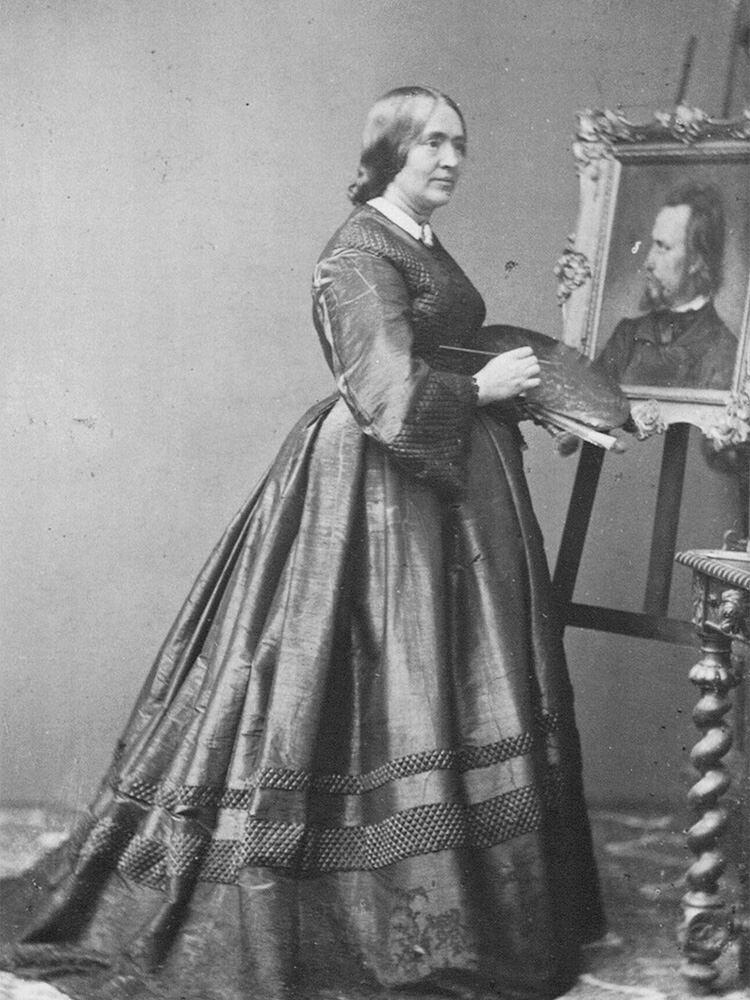A Cosmopolitan Woman
|
“Gampart is very obliging and compliments me that I am not only a skilled artist but also a skilled businessman.” As a female artist in a male-dominated profession, Elisabeth Jerichau Baumann (1819–1881) was aware early on that she would have to compete with her male colleagues. Despite the prevailing expectations as to the type of motifs women should paint, conditioned by their ‘sensitive nature’, there is nothing to suggest that Elisabeth Jerichau Baumann allowed herself to be limited by the conventions of the day. In the above quote Elisabeth Jerichau Baumann is speaking about her English gallery owner, and it shows, she also prided herself on having a distinct business acumen. As a painter, she had a wide repertoire of motifs and at the same time had a good eye for the female figure in its many guises, be she a historical maiden, a nursing mother, a girl reading in regional dress, a Turkish princess or an Egyptian Fellah woman.
Elisabeth Jerichau Baumann was born in Poland to German parents. In 1838, she travelled to Germany to study at the Düsseldorf Art Academy. She was a cosmopolitan woman who understood from a young age that if she was to be allowed to develop her talent, she would have to seek out internationally oriented art environments. In 1845, the 26-year-old painter travelled to Italy, and in Rome she met the Danish sculptor Jens Adolf Jerichau, whom she married. In 1849, the couple moved together to Copenhagen. They had nine children, but that did not stop her from painting and making long trips abroad to, among other places, North Africa, Turkey, St. Petersburg, Rome, Paris and not least London. Her cosmopolitan outlook meant that she found it difficult to gain recognition in the Copenhagen art environment, where she was condescendingly known as the “Düsseldorfer”. The art critics of the time favoured nationally oriented motifs and preferred a toned-down, naturalistic style of painting, which did not harmonise with the artist’s international style. |

|
